It’s Not Personal

“It’s not personal”, is a commonly used phrase when we are either giving feedback or sharing bad news with someone about something at work. We know that when we take things personally our brain reacts with our animal defense mechanism immediately protecting us from any form of aggression. Even if what we perceive as aggression is words, our system generates adrenaline, sends blood to our limbs and starts up our fight or flight response.
All of that sounds like it could be a good thing since our animal brain is protecting us, protecting our image, status, knowledge, credibility, etc. However, the problem is that one of the key elements that our brain needs in order to think and perform better is blood irrigation, and when we have that reaction, we immediately create a blood deficit in the brain since the blood is sent to our limbs to run or fight.
For this reason, as part of our leadership acceleration and coaching programs, we teach managers and leaders to work with non-threatening conversations. Considering that in our managerial work, sometimes we don’t realize how our language can generate that animal response in our collaborators or peers.
If you have heard the phrase from someone: “it is not personal”, tell me something, does that make you feel better? Or did you feel that it was just a phrase justifying the pain a person’s words were inflicting on you?
In my opinion, the phrase doesn’t work. If anything, it actually feels like even more aggression. What truly functions in our leadership work is to focus our feedback on the facts and things that happened or are currently happening, not on the person’s qualities or areas of opportunity. Even better, we can focus on the things that can happen differently in the future to avoid the problem and find success.
I really like the concept that Marshall Goldsmith proposed of feedforward. Stop using feedback (which means “let’s talk about everything that you did wrong”) and start using feedforward (which means “let’s talk about how you can make it better in the future”). By working with feedforward, you are really moving away from the aggression of judging the past and giving a person plain critique. Thus, moving towards the space of possibilities and the things that can be done differently in the future to improve.
Here’s an example of the beauty of this system:
- If we are going to discuss my past actions, I might have had a part in it and created a problem. I might even think it was not about the actions but about me being a bad person for that job. I may even begin to question how I could’ve been so foolish as to have made a mistake like that. In this scenario, it is much harder to convince my brain that I am not under attack.
- On the other hand, if we are going to discuss my future possibilities of carrying out a task differently (to avoid the mistake) then I cannot have a part in it with blame or judgement, because it has not happened yet. It’s us looking towards the future. We are discussing how to do it better, not how I did it wrong.
By focusing on the future, we are not really making it personal because the actions have not been taken yet. Rather, we are talking about improvements, possibilities, adjustments, and all of the things that need to be implemented and proved.
To feedforward!

Comments are closed.